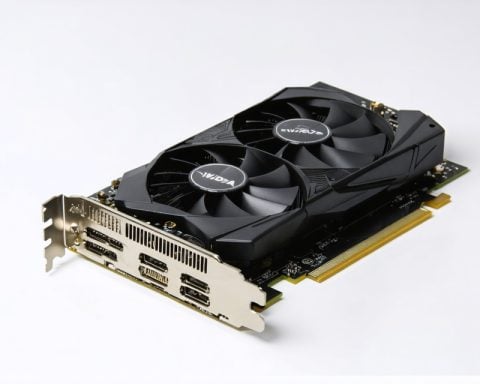- Nokia plans to invest up to €100 million annually in data centre networking.
- The company aims to generate an additional €1 billion in net sales by 2028.
- Nokia experienced a significant 81% increase in fourth-quarter profits, reaching €985 million.
- Sales rose by 10%, totalling €5.98 billion, exceeding analysts’ forecasts.
- The investment strategy aims to position Nokia as a leader in the growing data centre market.
- Nokia recognises the increasing importance of data consumption and connectivity in the technological landscape.
Nokia is poised to make waves in the lucrative data centre market with a stunning investment strategy! This Finnish tech giant is earmarking up to €100 million (£87.6 million) each year to expand its footprint in data centre networking. The ambitious goal? To generate an additional €1 billion in net sales by 2028.
While this investment may temporarily slow the growth of operating margins in its network infrastructure segment, Nokia is betting big on the momentum it has already built. With an impressive 81% increase in fourth-quarter profits, reaching €985 million, and a 10% rise in sales to €5.98 billion, the company is riding high. Analysts had predicted lower profits, but Nokia surpassed expectations, signalling solid recovery and growth potential.
As data consumption soars globally, companies like Nokia are stepping up their game, recognising that dominating this sector is crucial for future success. The strategic allocations towards data centres reflect a determination to remain relevant and competitive in a fast-evolving technological landscape.
Key Takeaway: With a clear strategy and remarkable fiscal growth, Nokia’s investment in the booming data centre market not only strengthens its position but also highlights the vital role data plays in our interconnected world. Get ready—Nokia is on a mission to transform and capitalise on the digital revolution!
Why Nokia is Set to Disrupt the Data Centre Market: Key Insights and Trends
Nokia is making a significant move into the data centre market with a substantial investment plan of up to €100 million annually. The company aims to boost its net sales by adding an impressive €1 billion by 2028, indicative of an aggressive strategy to navigate the ever-evolving tech landscape.
Market Forecasts
Nokia’s entrance comes at a time when data centre demand is surging, driven by increased cloud services, AI applications, and edge computing. Analysts predict the global data centre market will reach approximately $400 billion by 2027, growing at a compound annual growth rate (CAGR) of 5-7%. Nokia’s strategic investment aligns well with this trend, positioning itself to capitalise on the growth potential in the industry.
Innovations and Features
Nokia is expected to innovate within the data centre networking sector, enhancing networking solutions with advanced technologies like 5G integration and AI-driven automation. This can improve operational efficiencies, lower costs, and enhance data transmission speeds. Such innovations will be crucial as data becomes more central to business operations.
Security Aspects
As Nokia expands its data centre capabilities, cybersecurity will be paramount. The company is likely to prioritise secure networking solutions to protect sensitive data against rising cyber threats. By incorporating robust security measures, Nokia can build trust with clients and ensure compliance with global data protection regulations.
3 Important FAQs Related to Nokia’s Strategy
1. What impact will Nokia’s investment have on the data centre market?
– Nokia’s investment could lead to increased competition, driving innovation, better pricing, and improved service offerings within the data centre sector. This could also inspire other tech firms to ramp up their investments, further catalysing growth in the market.
2. How is Nokia’s financial performance shaping its expansion into data centres?
– The company’s recent financial success, with a reported 81% profit increase and an overall rise in revenues, provides a solid financial foundation for its ambitious expansion plans, signifying a strategic pivot towards high-growth sectors.
3. What are the potential risks associated with Nokia’s data centre investment?
– The primary risks include market volatility, competition from established players, potential cybersecurity threats, and the challenge of integrating new technologies. If the investment does not yield the expected growth, it could impact Nokia’s operating margins in the short term.
Conclusion
As Nokia embarks on this transformative journey in the data centre market, the focus on innovation, security, and market demand will be pivotal. With a clearly defined strategy to enhance its digital infrastructure, Nokia is set to play a crucial role in shaping the future of data consumption.
For more updates on Nokia and its ventures, visit Nokia’s official website.






















